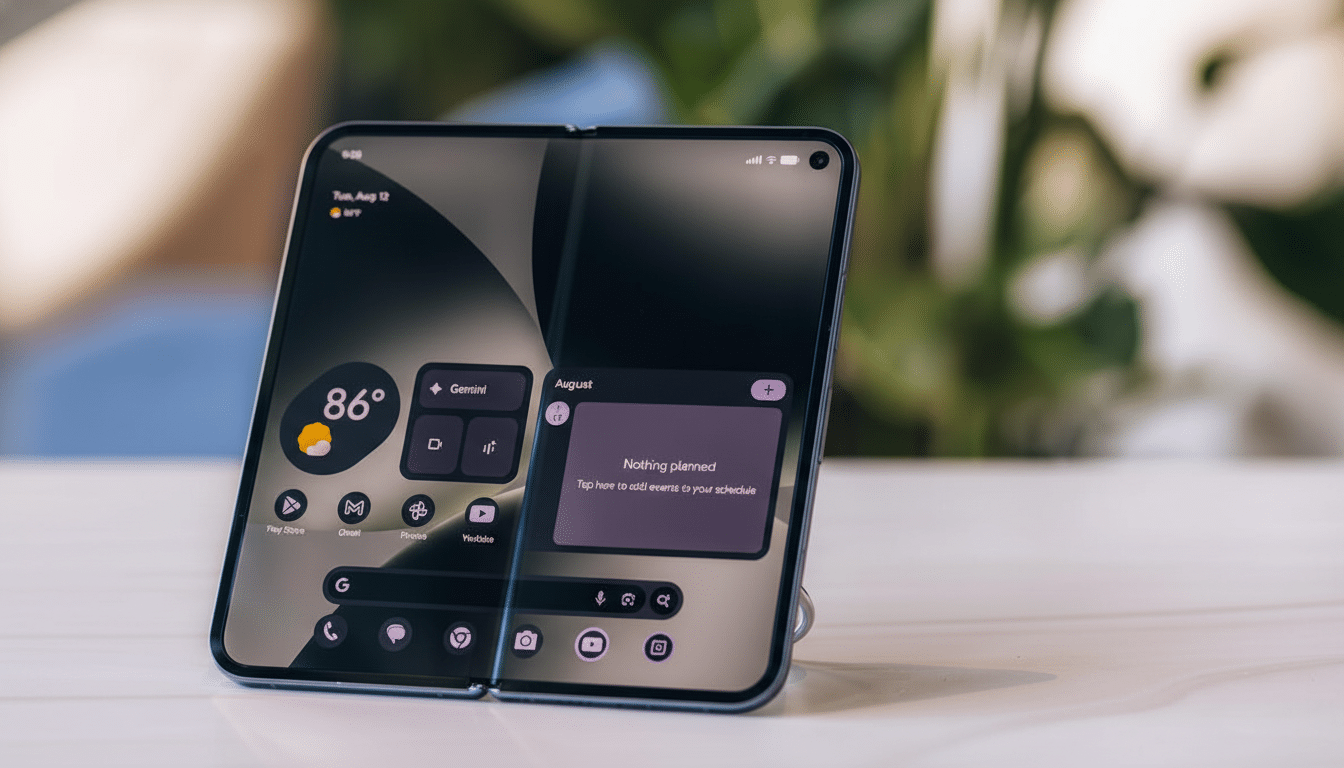Google has opened the door on the Pixel 10 Pro Fold’s hinge, and as much as anything it is a story of engineering restraint. By swapping out conventional gears for precision CAM mechanisms, the company reimagined how the two halves would move while in use, seal up when closed, and interact with each other, unlocking a larger outer display, a skinnier profile, and space for a bigger battery.
The Pixel team members I spoke with said they consider this a reliability-first overhaul. According to industrial designer Sangsoo Park, gear trains may cause long-term wear, backlash, and tolerance creep. CAMs, on the other hand, direct motion with formed tracks and followers, resulting in a more predictable path for the hinge (and therefore torque curve over time).

Why replace gears with CAMs in the Pixel 10 Pro Fold hinge
In previous foldables, geared hinges synced left and right halves but took up space and required tight tolerances to maintain smooth motion. Google’s recent proposal employs paired CAMs, converting rotation to regulated linear translation. This has the advantage that the opening and closing are symmetrical, but without the penalty in space and friction stack of meshed gears.
Architecture lead Yongho Lim’s team looked at the hinge path — the precise arc that the panels trace compared to the spine. With CAMs, engineers can sculpt that path with more precision, tuning the dwell points where the device “hovers” mostly open and the effort required to change angles. The overall effect is a hinge that feels consistent, resists wobble, and takes up less internal room.
This also simplifies long-term serviceability. Reduced meshing parts mean less particulate generation and lubricant migration, two causes of hinge grit and noise in high-cycle mechanisms. It’s a pragmatic one that values durability over theatrics.
Design Payoffs: Bigger Display and Battery
Space freed around the spine has allowed Google to push the display closer to the hinge line, which trims bezels and stretches out the cover panel to 6.4 inches. That extra spread isn’t just pleasing to look at; it cinches the aspect ratio of the outer screen tighter, so that apps feel less cramped and so your hands don’t need to travel as far.
The space saved on account of replacing gears also accommodated a larger battery module and more flexible component placement. Getting structural parts out of the mid-frame also presents more opportunities for antenna routing, thermal paths, and speaker chambers that aren’t competing for the same cubic millimeters. The end result is a thinner product without sacrificing stamina or radio performance.
Google has not focused on crease metrics, but a well-guided hinge path becomes an important factor in facilitating panel stress during folding. Transitions along the spine and casing are seamlessly executed to reduce micro-strains on both the ultrathin glass and its protective layers, resulting in consistent visuals from day one throughout its lifespan.

Reliability, sealing, and durability in the Pixel 10 Pro Fold
Google describes the assembly as “fully hermetic,” industry talk for aggressively sealed. The hinge cavity is infamous for collecting dust, which can scratch panels and abrade bearing surfaces. Bridging with gaskets, labyrinth geometries, and closer clearances is made possible by CAMs. The Pixel 10 Pro Fold should help keep ingress out without falling back on external caps alone.
The torque profile — how stiff the hinge feels at each point of its range — is another quiet improvement. The CAM lobes could be molded to enable multi-angle “hover” modes for tabletop video calls or split-screen tasks, to prevent the telltale looseness that appears as gear teeth wear. It’s that sort of polish users register subconsciously every time they open the phone.
Teardown experts have for years cited hinge complexity as a weakness in foldable technology. Particulate contamination and uneven wear are regularly cited by groups like iFixit and independent labs. Google’s pivot to a simpler, sealed, and gearless construction takes those complaints head-on.
Where it stands in the foldable field today
Competitors have been driving to leaner and less-hingy hinge architectures — from “waterdrop” fold paths to simple part-count designs. Samsung’s newest models chase thin-and-light to an extreme; some, like OnePlus and Oppo, have embraced cam-based friction hinges to shave weight. Google takes a different tack: precision CAM control and hermetic sealing, in order to trade off reliability for more usability gains.
Market watchers expect to see the foldable category continue to grow. It is expected to ship over 20 million units this year, as prices come down and the functionality of the designs improves. In that light, hinge engineering is the sort of differentiator that is difficult to replicate at speed — it applies to everything from claims on durability through to battery size and feel of the display.
The bottom line for Pixel buyers considering the Fold
The hinge on the Pixel 10 Pro Fold isn’t just a mechanical affectation. By dropping gears in favor of CAMs, Google packed in more screen for the same footprint, cleared space for a bigger battery, and trimmed thickness — while also intending to make a tighter seal and enable steadier long-term motion.
It may not necessarily dethrone all competition as the absolute thinnest just yet, but when you prioritize engineering, it becomes clear what matters most: reliability and practicality first — visible gains second. And for a form factor that rises or falls on the hinge, that’s exactly the right progression.

